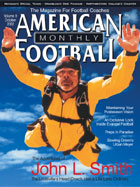AMERICAN FOOTBALL MONTHLY THE #1 RESOURCE FOR FOOTBALL COACHES
Article CategoriesAFM Magazine
|
Preps in ParadiseHawaii has always been a haven for high school football. Now the nation is noticing© More from this issue Duffy Daugherty had his own little Polynesian Pipeline back in the day, ages before people began to abuse the phrase, “back in the day.” He knew all about the high school football talent waiting to be discovered in Hawaii during the 1960s. That is why he brought Charlie Wedemeyer, Bob Apisa and Dick Kenney all the way to East Lansing from Oahu. “I think there’s always been a lot of good talent here,” said the man who honed a lot of it, former St. Louis School coach Cal Lee. “Back in the ‘60s those players going to Michigan State had a lot to do with Duffy loving the islands, and he loved the kids.” ....The full article can only be seen by subscribers. Subscribe today!
|
|
|||||||
| HOME |
MAGAZINE |
SUBSCRIBE | ONLINE COLUMNISTS | COACHING VIDEOS |
Copyright 2025, AmericanFootballMonthly.com
All Rights Reserved





